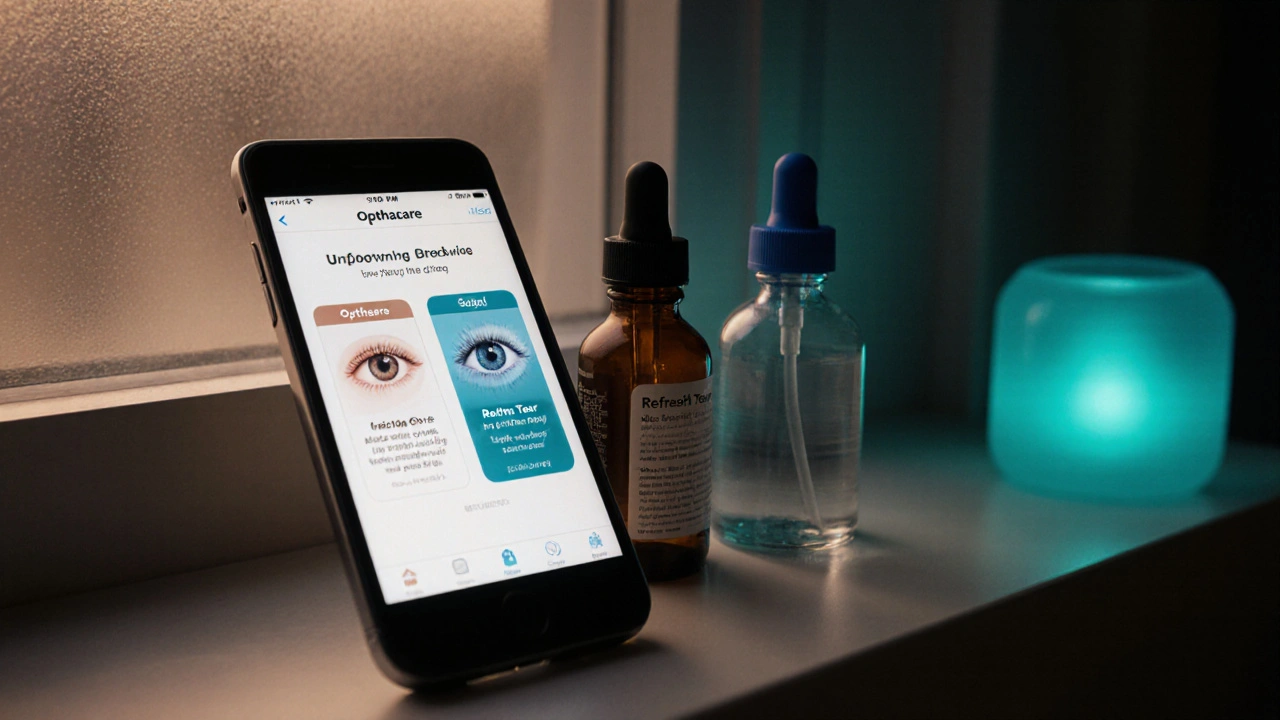Eye Drops: Everything You Need to Know
When dealing with eye drops, liquid medications applied directly to the eye to treat irritation, infection, or disease. Also known as ocular lubricants, they are a core part of everyday eye care and many prescription regimes.
One popular subclass is artificial tears, over‑the‑counter lubricating solutions that relieve dryness and mild irritation. For seasonal allergies, many reach for antihistamine eye drops, drops that block histamine receptors to reduce redness and itchiness. Patients with high eye pressure rely on glaucoma medication, prescription drops that lower intra‑ocular pressure to protect the optic nerve. Finally, some conditions demand a doctor’s formula, known as prescription ocular drops, customized treatments for infections, inflammation, or post‑surgical care.
How to Choose the Right Eye Drop for You
First, identify the problem you’re trying to solve. If your eyes feel gritty or dry after long screen time, artificial tears are usually enough. If you notice red, watery eyes during pollen season, an antihistamine formula can calm the reaction without a prescription. When a doctor measures elevated eye pressure, glaucoma medication becomes a lifelong commitment that requires strict dosing.
Second, consider the formulation. Preservative‑free drops are gentler for chronic dry‑eye sufferers, while preservative‑containing versions may last longer on the shelf. Third, check the dosage schedule. Some drops need one dose per day, others multiple times, and improper timing can reduce effectiveness—especially for glaucoma where consistency matters.
Fourth, verify the source. Online pharmacies sell many eye‑care products, but the risk of counterfeit or expired drops is real. Look for reputable sellers, confirm the pharmacy’s license, and read user reviews that mention packaging integrity. If you’re ordering a prescription drop, you’ll need a valid prescription and a pharmacy that follows proper verification steps.
Fifth, watch for side effects. Even over‑the‑counter drops can cause temporary blurred vision, a stinging sensation, or rare allergic reactions. Prescription drops may interact with other eye medications, so always tell your eye doctor about every product you use.
Understanding these factors helps you match the right drop to your needs, whether you’re buying a cheap generic artificial tear or a specialist glaucoma formula. Below you’ll find a curated list of articles that dive deeper into specific eye‑drop categories, buying tips, safety checks, and real‑world user experiences. Let’s get into the details and arm you with the knowledge to keep your vision clear and comfortable.
Ophthacare Eye Drops vs Natural Alternatives - Full Comparison
A detailed comparison of Ophthacare honey‑rose eye drops with top alternatives, covering ingredients, benefits, price, and how to pick the right product.
VIEW MORE
